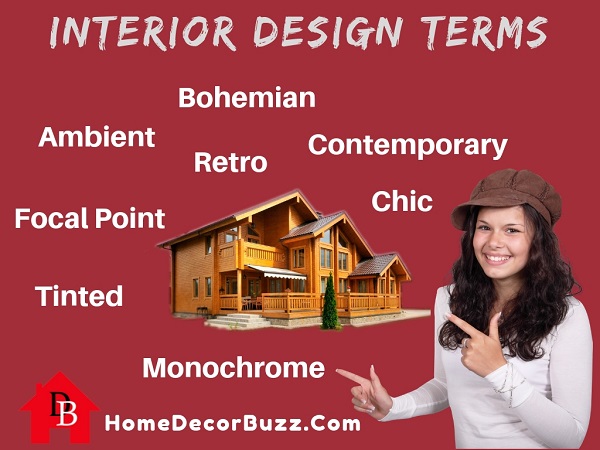Welcome to your ultimate resource on interior decorating terminology! Whether you’re a novice decorator or a seasoned pro, understanding the lingo is crucial for effective communication and project execution. In this article, we’ll dive deep into the terms that define the world of interior design and decorating, sprinkled with personal anecdotes and insights to make the learning process enjoyable.
The Basics of Interior Decorating
Interior decorating encompasses a vast array of terms that help define and shape the aesthetics and functionality of a space. Learning these terms can help you realize your design vision.
1.1 Design vs. Decorating
It’s essential to differentiate between interior design and interior decorating:
| Interior Design | Interior Decorating |
|---|---|
| Focuses on the overall spatial layout and structural planning. | Focuses on the aesthetics, color, furnishings, and finishes of a space. |
| Often requires formal education and training. | Can be pursued as a hobby or career with less formal education. |
1.2 Key Terms to Know
- Aesthetic: The visual appeal of the design.
- Functionality: How well the space serves its intended purpose.
- Focal Point: The feature in a room that draws the eye first.

Color Theory in Interior Design
Color is one of the most powerful tools in interior decorating, influencing mood, space perception, and style.
2.1 Color Wheel and Schemes
- Primary Colors: Red, blue, and yellow.
- Secondary Colors: Green, orange, and purple (made by mixing primary colors).
- Tertiary Colors: Combinations of primary and secondary colors.

2.2 Color Schemes
Common color schemes include:
- Monochromatic: Variations of a single color.
- Complementary: Colors opposite each other on the color wheel.
- Analogous: Colors next to each other on the wheel.
2.3 The Psychology of Color
Here’s a quick look at how color impacts emotions:
| Color | Emotion |
|---|---|
| Red | Passion, energy |
| Blue | Calmness, trust |
| Yellow | Happiness, warmth |
| Green | Growth, tranquility |

Key Furniture and Accessories Terminology
Furniture and accessories play a critical role in defining the style and function of a space.
3.1 Types of Furniture
- Sofas: Essential for comfort and style in living rooms.
- Coffee Tables: Centerpieces that enhance functionality.
- Dressers: Storage solutions for bedrooms.

3.2 Accessories to Elevate Your Space
Accessories can make or break a room’s vibe:
- Throw Pillows: Add color and comfort.
- Artworks: Infuse personality into your space.
- Rugs: Define areas and add warmth.
3.3 Pros and Cons of Furniture Styles
| Style | Pros | Cons |
|---|---|---|
| Modern | Sleek, minimalistic | Can feel cold, lacks ornamentation |
| Traditional | Timeless, elegant | Can feel heavy, outdated |
| Eclectic | Creative, unique | Risk of clutter, may lack cohesion |

Styles and Trends
Staying current with styles and trends can greatly enhance your decorating prowess.
4.1 Popular Interior Design Styles
- Bohemian: An eclectic mix of patterns and textures.
- Industrial: Raw materials and an urban aesthetic.
- Scandinavian: Functionality combined with simplicity and natural materials.

4.2 Current Trends in Interior Decorating
Some recent trends to consider include:
- Sustainable Design: Eco-friendly materials and practices.
- Smart Homes: Integrating technology for convenience and efficiency.
- Maximalism: Bold colors and patterns, contrasting with minimalism.
Textiles and Materials
The choice of textiles and materials can significantly impact the feel of a space.
5.1 Understanding Different Fabrics
Here are some common fabric types used in decorating:
- Cotton: Versatile and easy to clean.
- Silk: Luxurious but requires careful maintenance.
- Linen: Breathable and natural, but wrinkles easily.
5.2 Hard Materials in Design
Common hard materials include:
- Wood: Warm and inviting.
- Metal: Adds an industrial touch.
- Glass: Creates a sense of openness and light.
Layout and Space Planning
Effective space planning maximizes the functionality of a room.
6.1 Importance of Layout
The layout of furniture impacts flow and comfort:
- Open Floor Plans: Foster social interaction.
- Defined Areas: Create cozy, intimate settings.
6.2 Space Planning Tips
Here are some tips to enhance your space planning:
- Measure your space accurately.
- Consider traffic flow around furniture.
- Utilize multifunctional furniture for small spaces.
FAQs
What is the difference between interior design and interior decorating?
Interior design involves technical aspects of space planning and may require a degree, while interior decorating focuses on aesthetics and can be pursued without formal education.
How can I determine my decorating style?
Reflect on what makes you feel comfortable and inspired. Create a mood board with colors, textures, and images that resonate with you.
Are there any universal design principles I should follow?
Yes, consider principles like balance, contrast, harmony, rhythm, and scale when designing your space for cohesion and visual appeal.